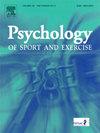安全的运动安全吗?严格的检查。
IF 3.3
2区 心理学
Q2 HOSPITALITY, LEISURE, SPORT & TOURISM
引用次数: 0
摘要
为了应对体育运动中对运动员人际暴力的广泛关注,安全体育运动作为一项共同努力,出现了,以防止伤害和保障运动员的健康。对安全运动的日益关注反映在研究的增长和教育倡议、政策和投诉机制的发展上。鉴于安全运动相关研究和倡议的快速进展,以及安全运动问题的复杂性和多面性,对该领域进行批判性研究是及时的。使用建构主义的视角,我们认为安全运动具有各种本体论、认识论和价值论的局限性,其中包括概念、方法和实践上的缺陷。本分析旨在通过对其缺点的批判性检查,激发学术讨论,增强对安全运动固有的复杂挑战的理解。本文章由计算机程序翻译,如有差异,请以英文原文为准。
Is sport safe with safe sport? A critical examination
In response to widespread concerns about interpersonal violence towards athletes in sport, the safe sport movement has emerged as a concerted effort to prevent harm and safeguard athlete well-being. Increased attention on safe sport is reflected in the growth of research and the development of education initiatives, policies, and complaint mechanisms. Given the rapid progress in safe sport-related research and initiatives, as well as the complex and multifaceted nature of safe sport issues, a critical look at the field is timely. Using a constructivist lens, we suggest that safe sport is characterized by various ontological, epistemological, and axiological limitations, which encompass conceptual, methodological, and practical shortcomings. This analysis aims to stimulate scholarly discussion and enhance understanding of the complex challenges inherent in safe sport through a critical examination of its shortcomings.
求助全文
通过发布文献求助,成功后即可免费获取论文全文。
去求助
来源期刊
CiteScore
6.40
自引率
5.90%
发文量
172
审稿时长
69 days
期刊介绍:
Psychology of Sport and Exercise is an international forum for scholarly reports in the psychology of sport and exercise, broadly defined. The journal is open to the use of diverse methodological approaches. Manuscripts that will be considered for publication will present results from high quality empirical research, systematic reviews, meta-analyses, commentaries concerning already published PSE papers or topics of general interest for PSE readers, protocol papers for trials, and reports of professional practice (which will need to demonstrate academic rigour and go beyond mere description). The CONSORT guidelines consort-statement need to be followed for protocol papers for trials; authors should present a flow diagramme and attach with their cover letter the CONSORT checklist. For meta-analysis, the PRISMA prisma-statement guidelines should be followed; authors should present a flow diagramme and attach with their cover letter the PRISMA checklist. For systematic reviews it is recommended that the PRISMA guidelines are followed, although it is not compulsory. Authors interested in submitting replications of published studies need to contact the Editors-in-Chief before they start their replication. We are not interested in manuscripts that aim to test the psychometric properties of an existing scale from English to another language, unless new validation methods are used which address previously unanswered research questions.

 求助内容:
求助内容: 应助结果提醒方式:
应助结果提醒方式:


